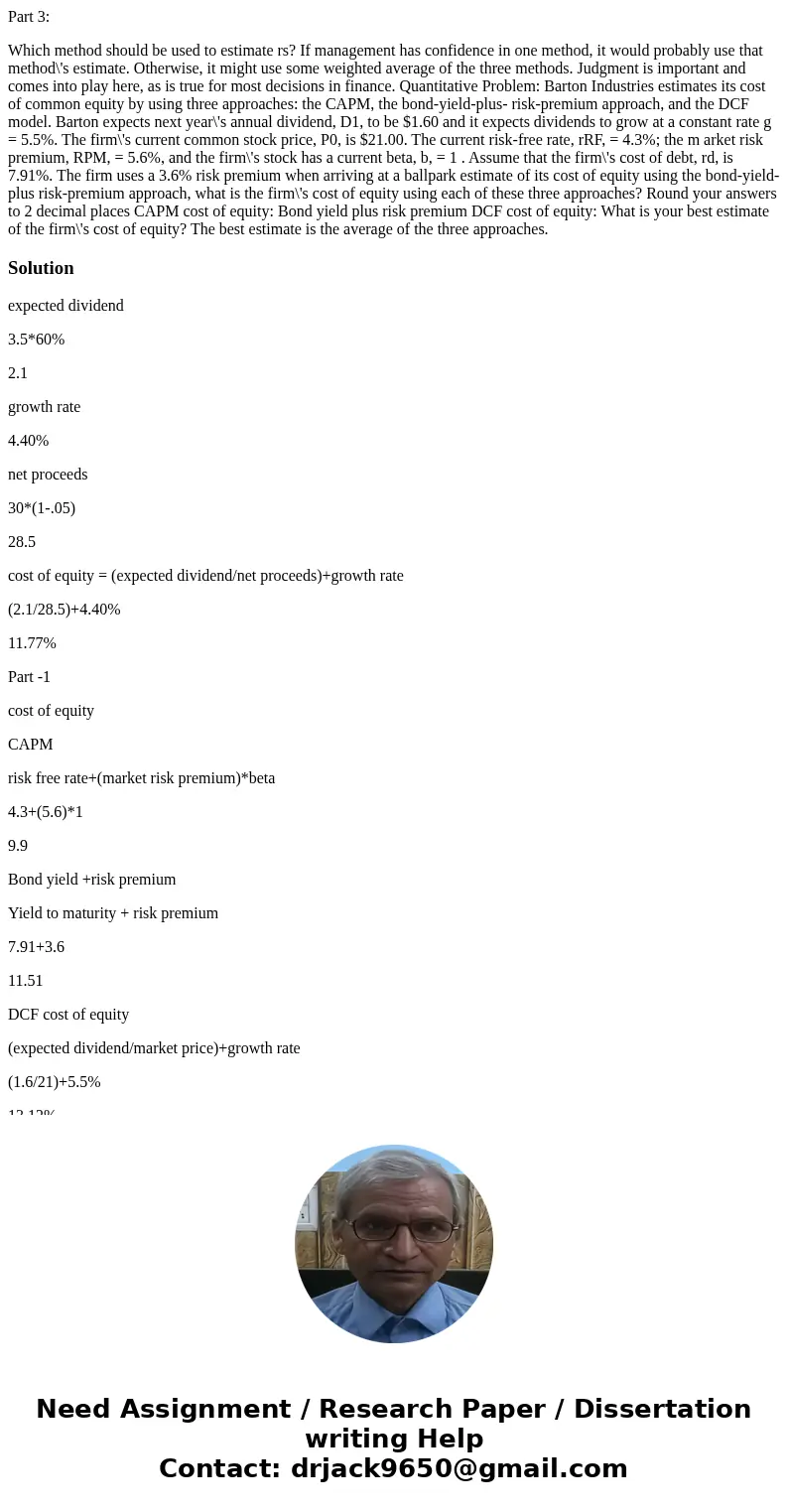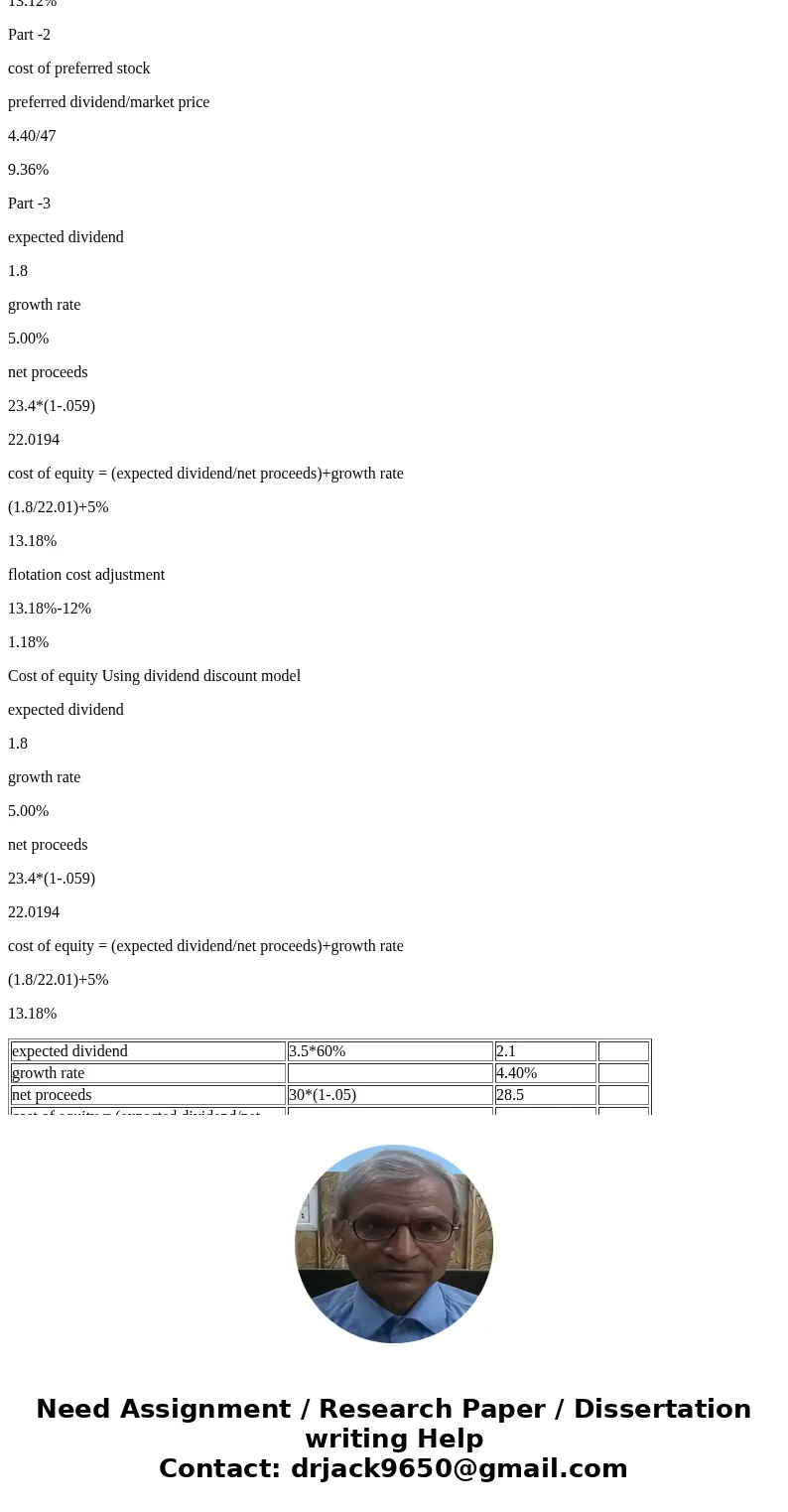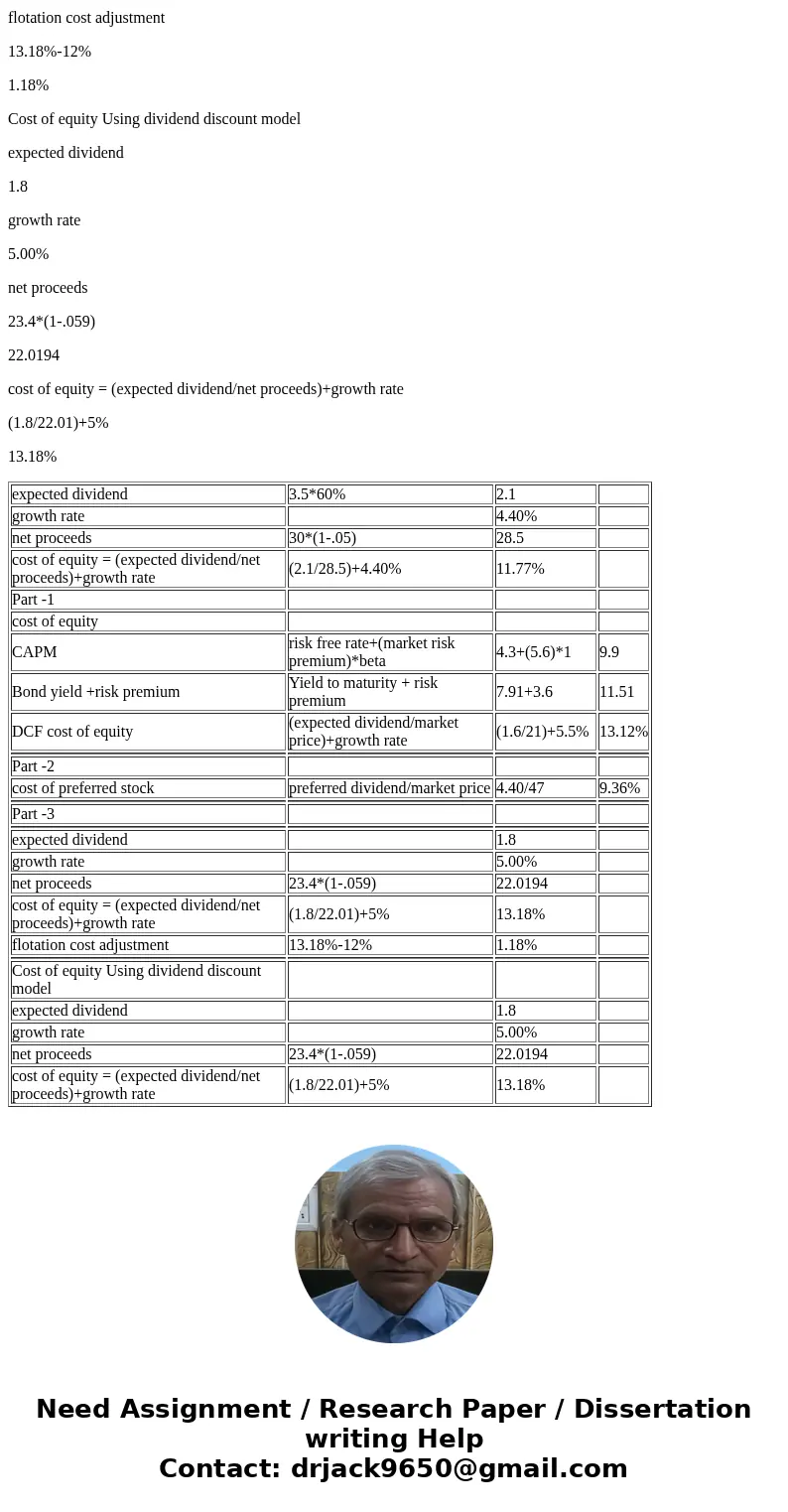Part 3 Which method should be used to estimate rs If managem
Part 3:
Which method should be used to estimate rs? If management has confidence in one method, it would probably use that method\'s estimate. Otherwise, it might use some weighted average of the three methods. Judgment is important and comes into play here, as is true for most decisions in finance. Quantitative Problem: Barton Industries estimates its cost of common equity by using three approaches: the CAPM, the bond-yield-plus- risk-premium approach, and the DCF model. Barton expects next year\'s annual dividend, D1, to be $1.60 and it expects dividends to grow at a constant rate g = 5.5%. The firm\'s current common stock price, P0, is $21.00. The current risk-free rate, rRF, = 4.3%; the m arket risk premium, RPM, = 5.6%, and the firm\'s stock has a current beta, b, = 1 . Assume that the firm\'s cost of debt, rd, is 7.91%. The firm uses a 3.6% risk premium when arriving at a ballpark estimate of its cost of equity using the bond-yield-plus risk-premium approach, what is the firm\'s cost of equity using each of these three approaches? Round your answers to 2 decimal places CAPM cost of equity: Bond yield plus risk premium DCF cost of equity: What is your best estimate of the firm\'s cost of equity? The best estimate is the average of the three approaches.Solution
expected dividend
3.5*60%
2.1
growth rate
4.40%
net proceeds
30*(1-.05)
28.5
cost of equity = (expected dividend/net proceeds)+growth rate
(2.1/28.5)+4.40%
11.77%
Part -1
cost of equity
CAPM
risk free rate+(market risk premium)*beta
4.3+(5.6)*1
9.9
Bond yield +risk premium
Yield to maturity + risk premium
7.91+3.6
11.51
DCF cost of equity
(expected dividend/market price)+growth rate
(1.6/21)+5.5%
13.12%
Part -2
cost of preferred stock
preferred dividend/market price
4.40/47
9.36%
Part -3
expected dividend
1.8
growth rate
5.00%
net proceeds
23.4*(1-.059)
22.0194
cost of equity = (expected dividend/net proceeds)+growth rate
(1.8/22.01)+5%
13.18%
flotation cost adjustment
13.18%-12%
1.18%
Cost of equity Using dividend discount model
expected dividend
1.8
growth rate
5.00%
net proceeds
23.4*(1-.059)
22.0194
cost of equity = (expected dividend/net proceeds)+growth rate
(1.8/22.01)+5%
13.18%
| expected dividend | 3.5*60% | 2.1 | |
| growth rate | 4.40% | ||
| net proceeds | 30*(1-.05) | 28.5 | |
| cost of equity = (expected dividend/net proceeds)+growth rate | (2.1/28.5)+4.40% | 11.77% | |
| Part -1 | |||
| cost of equity | |||
| CAPM | risk free rate+(market risk premium)*beta | 4.3+(5.6)*1 | 9.9 |
| Bond yield +risk premium | Yield to maturity + risk premium | 7.91+3.6 | 11.51 |
| DCF cost of equity | (expected dividend/market price)+growth rate | (1.6/21)+5.5% | 13.12% |
| Part -2 | |||
| cost of preferred stock | preferred dividend/market price | 4.40/47 | 9.36% |
| Part -3 | |||
| expected dividend | 1.8 | ||
| growth rate | 5.00% | ||
| net proceeds | 23.4*(1-.059) | 22.0194 | |
| cost of equity = (expected dividend/net proceeds)+growth rate | (1.8/22.01)+5% | 13.18% | |
| flotation cost adjustment | 13.18%-12% | 1.18% | |
| Cost of equity Using dividend discount model | |||
| expected dividend | 1.8 | ||
| growth rate | 5.00% | ||
| net proceeds | 23.4*(1-.059) | 22.0194 | |
| cost of equity = (expected dividend/net proceeds)+growth rate | (1.8/22.01)+5% | 13.18% |



 Homework Sourse
Homework Sourse